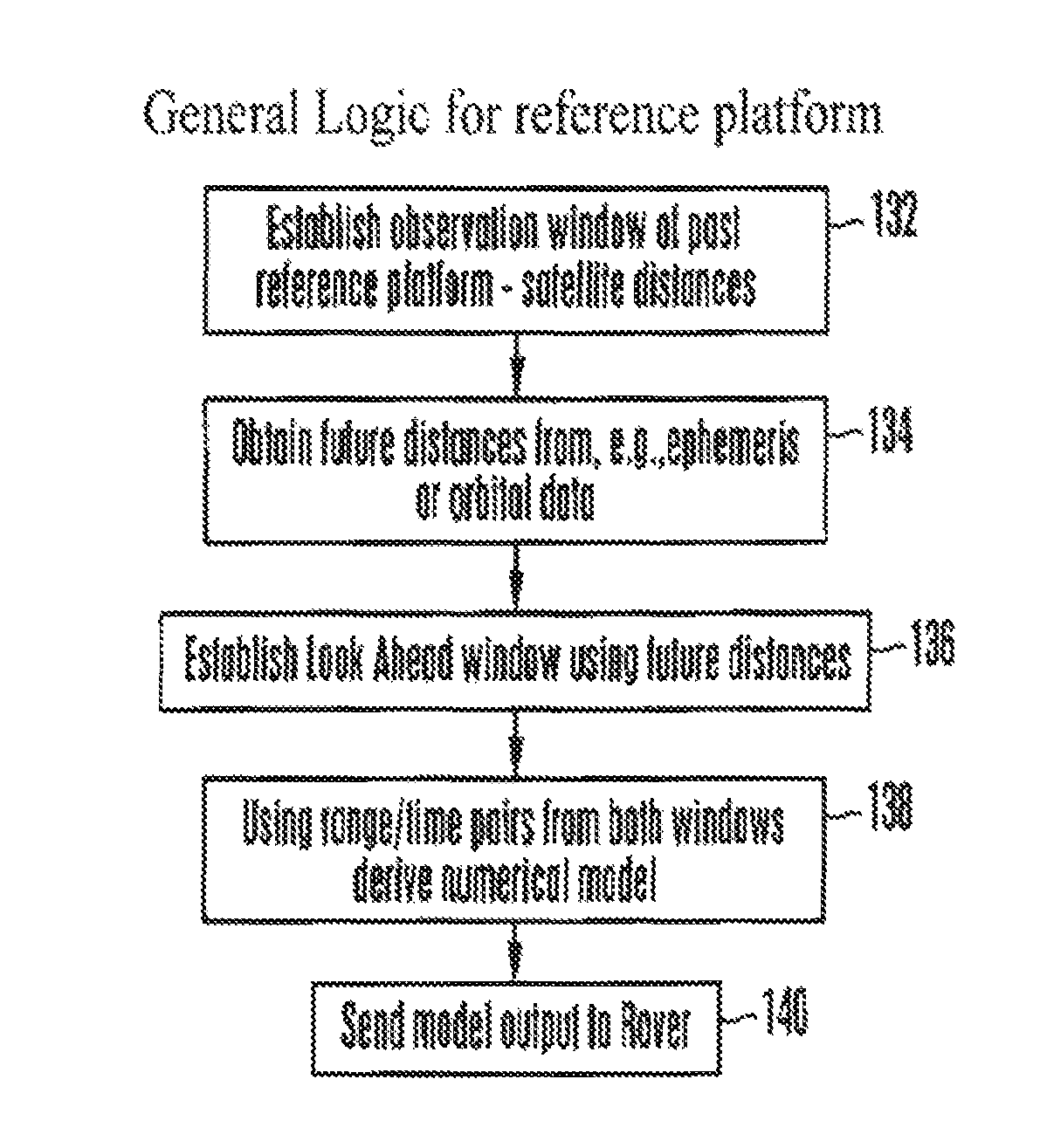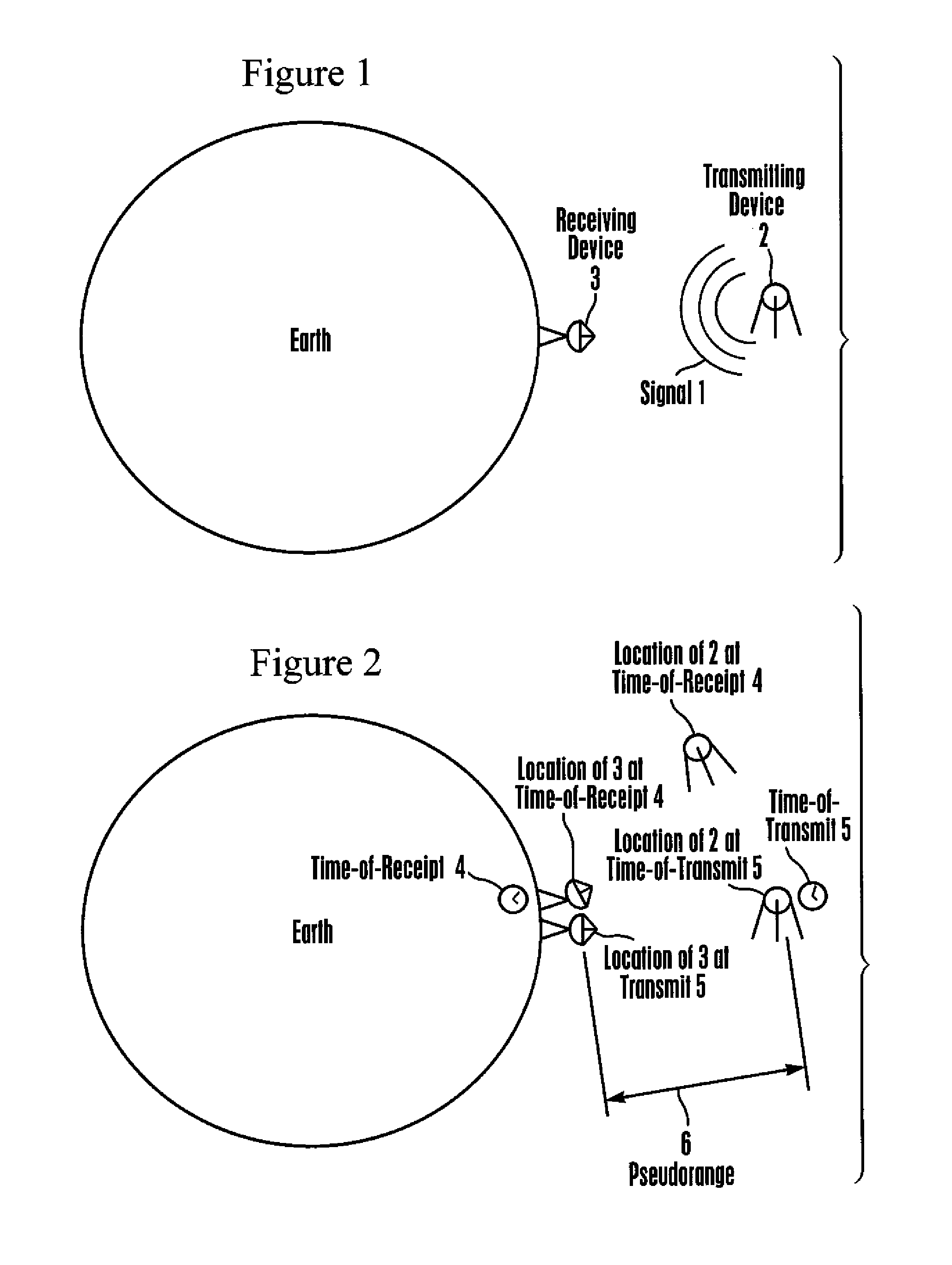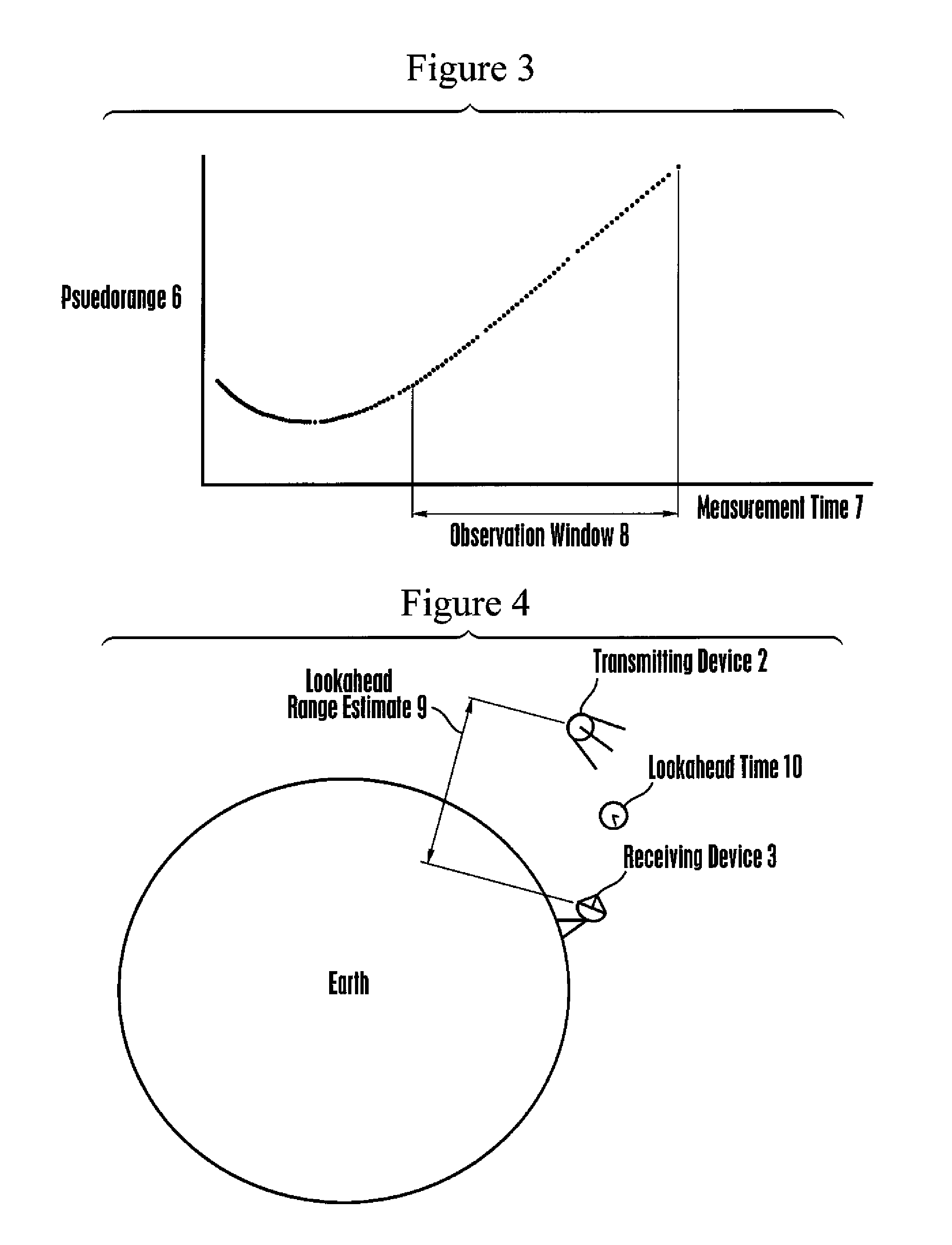Method and apparatus for modeling of GNSS pseudorange measurements for interpolation, extrapolation, reduction of measurement errors, and data compression
a technology of pseudorange measurement and model, applied in the field of method and apparatus for modeling of gnss pseudorange measurement for interpolation, extrapolation, reduction of measurement errors, data compression, etc., can solve the problems of prohibitive and problematic, loss or interruption of this data stream,
- Summary
- Abstract
- Description
- Claims
- Application Information
AI Technical Summary
Benefits of technology
Problems solved by technology
Method used
Image
Examples
Embodiment Construction
[0040]In brief overview, device built in accordance with present principles is capable of determining or receiving a plurality of measured pseudorange values between an orbiting GNSS satellite and a receiving device at a fixed location on Earth, and associated time values, and of storing the pseudorange and associated time values in a suitable memory device. The preferred embodiment device is further capable of determining or receiving a plurality of estimated range values between the aforementioned GNSS satellite and receiving device at future time values, using ephemeris data broadcast by said GNSS satellite or similar orbital parameters obtained from other sources, and mathematically projected into the future, and of storing the estimated range and associated time values in a suitable memory device. The preferred embodiment device is further capable of computing polynomial regression models describing time histories of ranges between the aforementioned GNSS satellite and receivin...
PUM
 Login to View More
Login to View More Abstract
Description
Claims
Application Information
 Login to View More
Login to View More - R&D
- Intellectual Property
- Life Sciences
- Materials
- Tech Scout
- Unparalleled Data Quality
- Higher Quality Content
- 60% Fewer Hallucinations
Browse by: Latest US Patents, China's latest patents, Technical Efficacy Thesaurus, Application Domain, Technology Topic, Popular Technical Reports.
© 2025 PatSnap. All rights reserved.Legal|Privacy policy|Modern Slavery Act Transparency Statement|Sitemap|About US| Contact US: help@patsnap.com



